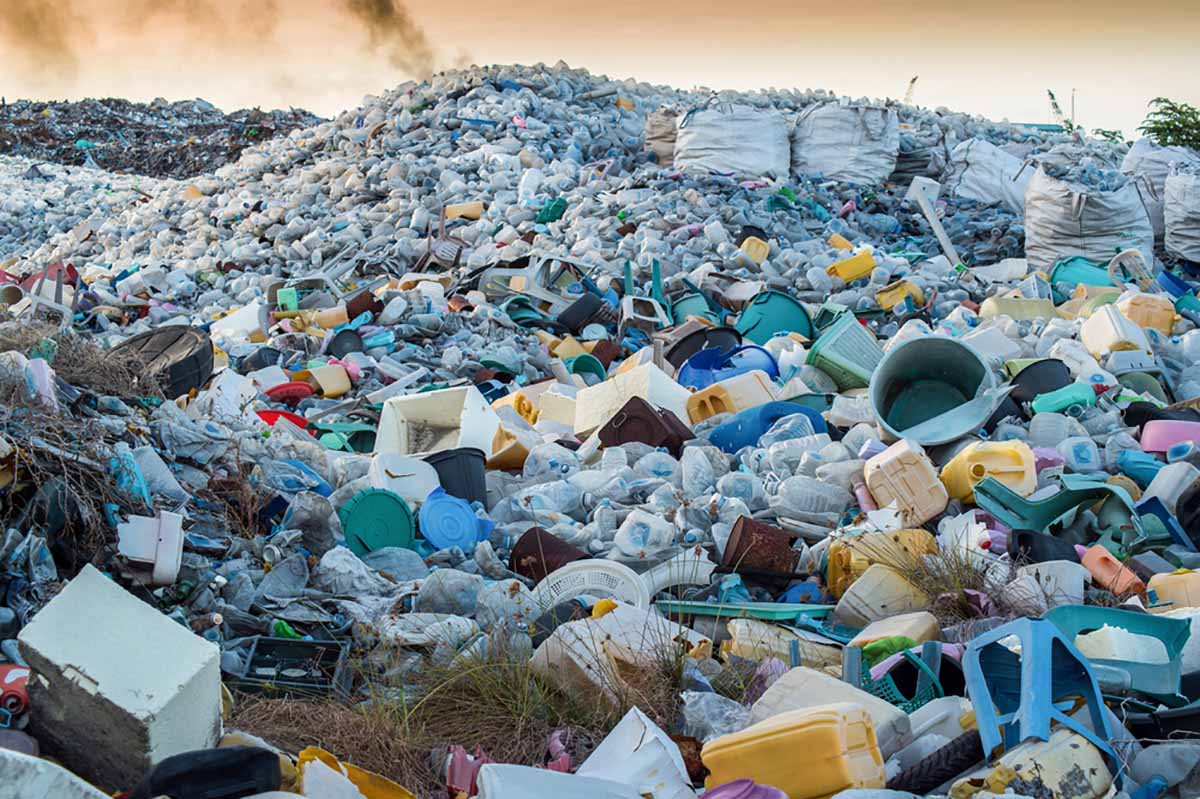
Researchers at The Circulate Initiative identified several common challenges that cities face when dealing with plastic waste. | Mohamed Abdulraheem/Shutterstock
Research recently undertaken by several groups dug into how individual cities in ocean plastic hot spots are approaching materials management.
The study, funded by The Circulate Initiative, the Resilient Cities Network and Ocean Conservancy, used data from six cities – in India, Indonesia, Malaysia, Panama and Vietnam – that participated in an Urban Ocean program.
Researchers employed a methodology for quantifying materials management on a community level called the Circularity Assessment Protocol (CAP) to create a set of standardized data. That data was then analyzed to compare plastic usage between the cities and come up with solutions for plastic management.
The findings
According to the study, plastic items and packaging represented over 90% of fast-moving consumer goods (FMCG), 78% of to-go items and 69% of litter items. (The FMCG category includes items such as beverages, candy, chips and tobacco.)
By count, polypropylene (PP) was the most common material found in to-go items across all cities at 31%, followed by paper at 13%, polystyrene (PS) at 12% and PET at 11%. The remaining percentage was a mix of materials.
About 1% of to-go products across all cities were labeled as compostable, biodegradable or oxo-degradable plastic, but the study found through interviews that people had “unanimous confusion around the definition of those items, how best to identify them and how to properly dispose of them.”
Looking at litter, 69% was plastic. Half of all litter items documented across all cities were food packaging plastic or tobacco products, the study added.
“Similar challenges exist across all cities, including gaps between regulations and enforcement, lack of stability and reliability in the recycling market, challenges surrounding behavior change, poor conditions in the informal waste sector and lack of accessible and affordable alternatives to single-use plastic,” the study noted.
Researchers observed that the cities in the study had several factors working in their favor. “Common strengths include domestic manufacturing and parent companies, innovations to maximize collection, high amounts of organic waste and opportunities for waste segregation, existing regional or national policy frameworks and an energized, environment-conscious younger generation,” the study stated.
Most cities had “small but enthusiastic groups of citizens” that supported refill and reuse programs, and some cities had historical precedents for reusable and alternative packaging, such as tiffin food carriers in Semarang, Indonesia and banana leaf food packaging in Chennai, India. Tiffins are circular stacking metal tins that keep different food items separated.
The cities were all also working toward various solutions, including river-based litter traps, enhanced source separation and processing, improved treatment facilities and empowering the informal waste sector, the study found.
The takeaway
The researchers suggested increasing collection and sorting infrastructure, placing more well-managed public trash bins to help handle litter, implementing extended producer responsibility programs and eliminating unnecessary, avoidable and problematic plastics.
“When fostering a truly circular materials management system, no solution works in a vacuum,” the study concluded. “In a functioning circular economy, all pieces are connected and constantly communicate, learning from each other to optimize the system. Collaborative, systems-level data like CAP and frameworks that foster threads from science to solutions can help provide the critical support cities need to tackle these interrelated challenges.”
A version of this story appeared in Resource Recycling on Aug. 28.

